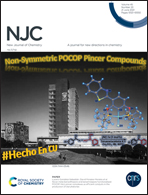Freestanding porous carbon membrane deriving from the alginic acid/poly(ionic liquid) complex and its high-performance HER electrocatalysis†
Abstract
Porous carbon materials have attracted enormous interest and are widely applied in renewable energy storage and conversion. In this work, freestanding nitrogen/sulfur co-doped porous carbon (NSPC) membranes were fabricated facilely by carbonizing the electrostatically cross-linked complexes, composed of hydrophobic poly(ionic liquid) (PIL) and alginic acid (AA). The newly-fabricated NSPC membranes can be used directly as the electrodes for the electrocatalytic hydrogen evolution reaction (HER) and supercapacitors in the absence of any binding agents/additives. Outstandingly, NSPC-9 presented a specific capacitance (Cs) as high as 969 F g−1 at the current density of 0.1 A g−1. Additionally, NSPC-9 also delivered excellent HER electrocatalytic performance. In particular, a current density of 10 mA cm−1 could be achieved at a low overpotential of 146 mV, and a small Tafel slope of 64 mV dec−1 could be presented. Benefiting from their large surface area, moderate N/S dopants and good electron/electrolyte transport ability, as well as low cost and convenient synthesis procedure, NSPCs are promising electrode materials and have great potential applications in electrocatalysis and supercapacitors.



 Please wait while we load your content...
Please wait while we load your content...